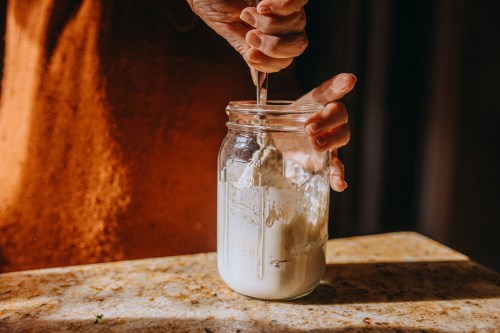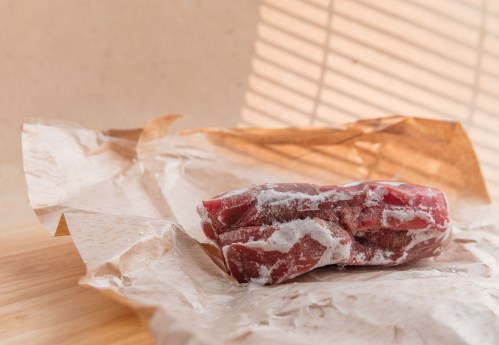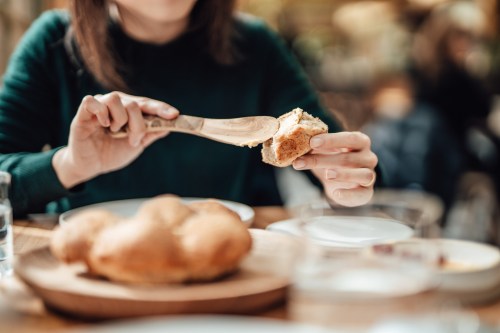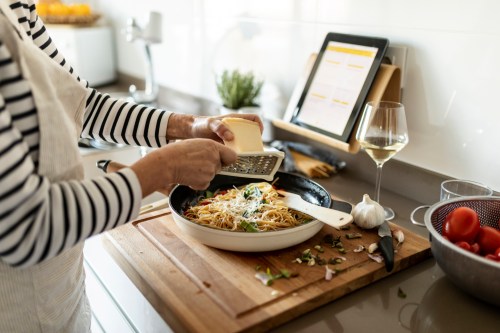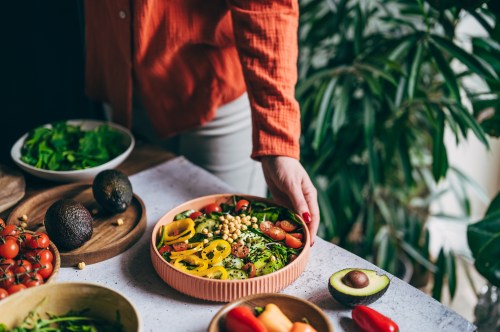A Cookware Set That’s 17 Pieces, Only $80, and *So* Chic? This Is Not a Prank
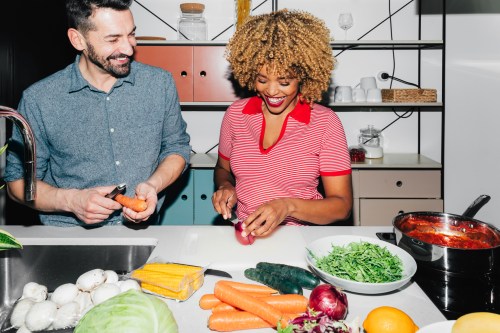
Every home has its enter-at-your-own-risk-zone. There’s the shoe closet, piled high with pairs that have strayed from the racks. There’s the junk drawer, filled with ink-less pens and rogue rubber bands and batteries that probably don’t work. And in my humble abode, there’s the scary place for the pots and pans. Since I was a kid, I’ve dreamt of having a pristine kitchen with sparse shelves and roomy cabinets, in which matching sets of cookware and bakeware are stacked and ready for their photo opp. Open up my oven-adjacent cabinets (if you dare), and you’ll see that this dream has yet to be realized—which is why I’m springing for a new 17-piece set of high-quality Carote cookware while it’s on sale at Walmart.
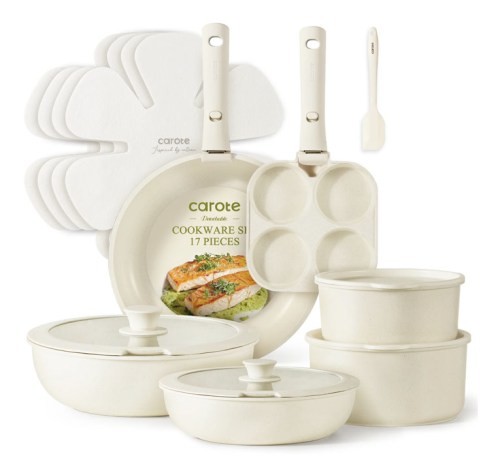
Carote Nonstick Cookware 17-Piece Set, $80
Originally $140, on sale at Walmart for 43 percent off
If you're also drowning in a mish mosh of skillets, think about this: With the 17-piece Carote set (which has more than 7,000 five-star reviews on Walmart), you get two frying pans, a large sauté pan, two sauce pans, two removable handles, four lids—two designed for fridge storage and two made from silicone—four pot protectors, a spatula, an egg pan, and a whole new era of cooking, dining, and outfitting your kitchen in a way that’s giving Ina.
You can totally hang Carote’s pots and pans on hooks for your dinner guests to admire (open-kitchen types, you're in luck)—but the durable and nonstick cookware is designed to stack and store neatly to save precious square inches and look classy on display. My apartment’s galley kitchen is (blessedly) tucked away from where we eat and entertain, but secretly knowing my cabinets are orderly and easy to navigate is a seriously satisfying flex, whether I’m feeding myself or a crowd.
And as for the whole cooking part? From baking to searing, sautéing, and simmering, Carote’s granite and aluminum construction is designed to heat up rapidly, which helps cut down on kitchen time for all kinds of recipes. Plus, each piece is stovetop-, oven-, and dishwasher-safe, which makes multi-step (and messy) meals feel like a total breeze.
Thanks to the cookware’s removable handles, you can transport courses directly from the kitchen to your dining table without having to re-plate or add to your sink load of dishes. Have I mentioned how minimalist-chic the off-white finish is? It’ll look planned and purposeful nestled into any tablescape, no matter how haute cuisine. And once everyone’s had their fill, you can snap one of the set’s lids directly on the cookware and store your leftovers in the refrigerator—no fishing for Tupperware required. (The container cabinet: another do-not-enter zone.)
All these features make for a solid case when it comes to my cupboard makeover, but it’s the *major* sale at Walmart that has me officially in. Given the quality, aesthetic, and versatility of this set, the retail price of $140 is already a can’t-pass-up deal. So at over 40 percent off, I’m making a list of all the foodies in my life I can gift it to—and seriously considering adding the 22-piece set (which is on sale for $100 right now) to my cart, too.
Grab a set for yourself now, bookmark a few recipes, invite your friends over for dinner, and don’t fret if they feel like snooping through your once-forbidden cabinets. Nothing to see there.
Sign Up for Our Daily Newsletter
Get all the latest in wellness, trends, food, fitness, beauty, and more delivered right to your inbox.
Got it, you've been added to our email list.
